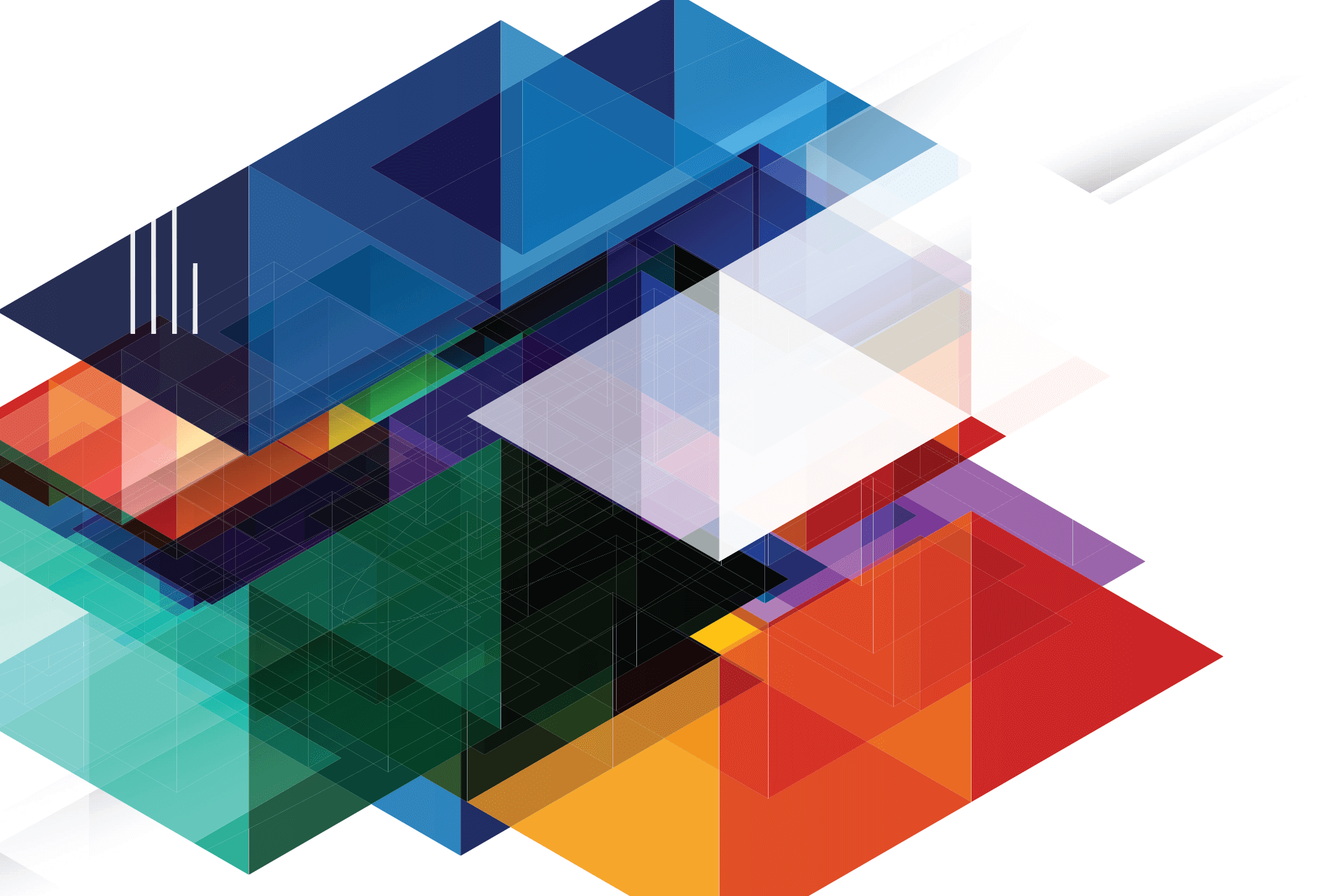

Digital Arts Program Celebrates Silver Anniversary
By Julie Carle '78
Twenty-five years ago, teaching students to create art on computers was in its infancy. With the forward-thinking mindset of School of Art Associate Professor Ron Coleman, and with financial support by University administrators and donors, BGSU became an early adopter for creating a computer art program.
In 1975, more than a decade before computer art would become a major in the BGSU School of Art, the University had its first foray into the industry when it hosted the second annual international SIGGRAPH, the conference of the Association for Computing Machinery’s Special Interest Group for Graphics. By 1984, art courses were using computers in the classrooms. A year later, the BG News reported that the art students’ lab included Atari 8899XLs, color monitors, disk drives, a printer, videotape, 35 millimeter slides and software with access to several computer languages. By spring 1992, the first cohort of eight computer art students moved their tassels to the left of their mortar boards, and were ready to pursue careers in the relatively new industry of computer animation and design.
In fall 2017, the program, now called digital arts, celebrates the 25th anniversary of that first graduating class. From humble beginnings, digital arts at BGSU has developed into a nationally recognized program. Animation Career Review has consistently ranked it as one of the top programs in the country, this spring naming it No. 9 in the Midwest, No. 15 among public universities and No. 50 overall.

The early years were starkly different as the inaugural group was exploring new territory. In a January 1985 BG News article, Coleman said, “The University is currently experimenting with computer art. We’ve just stepped on an escalator and we don’t know where we are going.”
Coleman described how computer art students “use software to facilitate invention, using the computer as more of an interactive process rather than simply as a tool.
“We’re not interested in programming computers but in using them as a part of the process of artistically imitating life,” he stated. “The computer has given us the ability to manipulate the environment to make art respond back to life, and we can do it fast.”
Gary Davis, one of the first graduates and now the senior go-to marketing manager for business development at AMD Radeon Technologies Group, recalled enrolling at BGSU after talking with Coleman about the computer graphics specialization in art that was about to become a major.
“I was hooked,” Davis said. “With those words, everything changed for me. To this day, Ron defines the term ‘mentor’ for me. He worked with us, was open-minded and encouraged us to be diverse.”
Though the tools were rudimentary in today’s terms, students were still able to do as much as possible with limited resources. “We learned to think outside the box,” Davis said. They could use only 16 colors at a time when doing animation work, but they figured out they could use 16 colors in one frame and a different 16 colors in the next frame. “We learned how to be creative in the process.”
As the program started to grow, the University hired Mark Marcin in 1994 to further develop the division. His vision was to expand the scope of digital arts to include animation, imaging and virtual reality, interactive media and video. Over the next six years, faculty were hired to enrich the curriculum and the Master of Fine Arts in Digital Arts degree was added. During his tenure, funding from then-President Sidney Ribeau created the Center for Advanced Visualization and Education (CAVE), and a donation of software from Alias put the BGSU program at the forefront with state-of-the-art facilities and equipment.
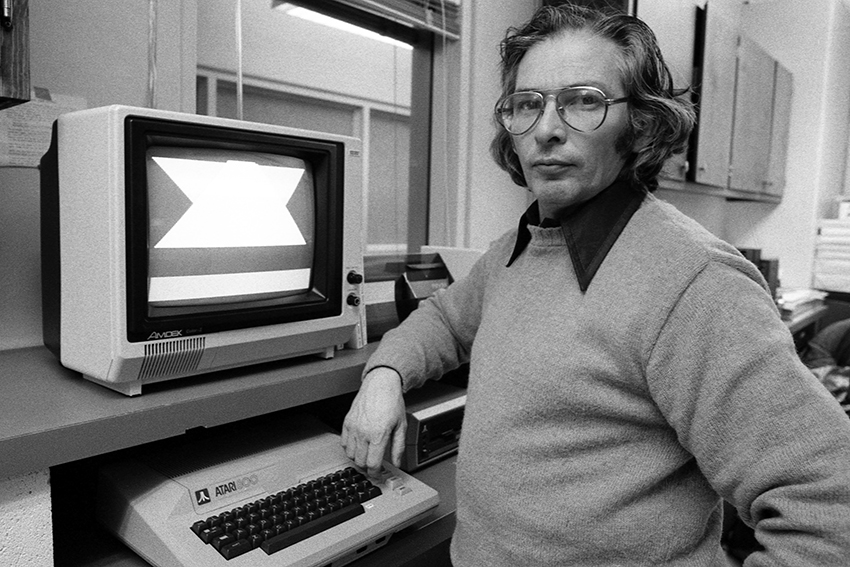
When Andrew Hughes arrived on campus in 2001, the digital arts program was firmly established. The 2005 graduate and founder and president of Designing Digitally Inc., an interactive design company that specializes in customized e-learning development, said that BGSU and the digital arts program prepared him for the possibilities beyond earning a degree. He grew up in Columbus Grove, Ohio, and had worked with computers for many years before enrolling at BGSU. When he heard that BGSU had a digital arts program that would allow him to be creative in the world of computers, he knew it was the right place for him.
“BGSU opened my eyes to things I had never seen. I met so many people from so many backgrounds; it made me more aware of the world around me,” he said. The digital arts faculty supported and encouraged him. Bonnie Mitchell, who was his boss, instructor and adviser, helped him stay focused and steered him in the right direction.
Fall celebration showcases digital arts alumni
To celebrate this 25th anniversary milestone, a fall celebration will include a lecture series, a panel presentation and a digital arts exhibition, all featuring alumni of the program. Lectures are planned by Deneva Goins ’02, user experience designer and strategist at HP Inc.; Michael Fox ’13, a Los Angeles-based artist researching the use of natural aesthetics to inform subjective conclusions; and Hughes. Details for each of the lectures are being finalized.
The special panel presentation, planned for Saturday, Sept. 30, at 5:30 p.m. in the Thomas B. and Kathleen M. Donnell Theatre in The Wolfe Center for the Arts, will welcome successful alumni representing a variety of industries to share their BGSU memories and how they discovered their career paths.
The digital arts exhibition will be part of the larger BGSU Alumni Art Show that features works of some of the School of Art’s successful alumni. The alumni exhibition, in the Willard Wankelman and Dorothy Uber Bryan galleries of the Fine Arts Center, opens Sept. 29 and runs through Nov. 2.
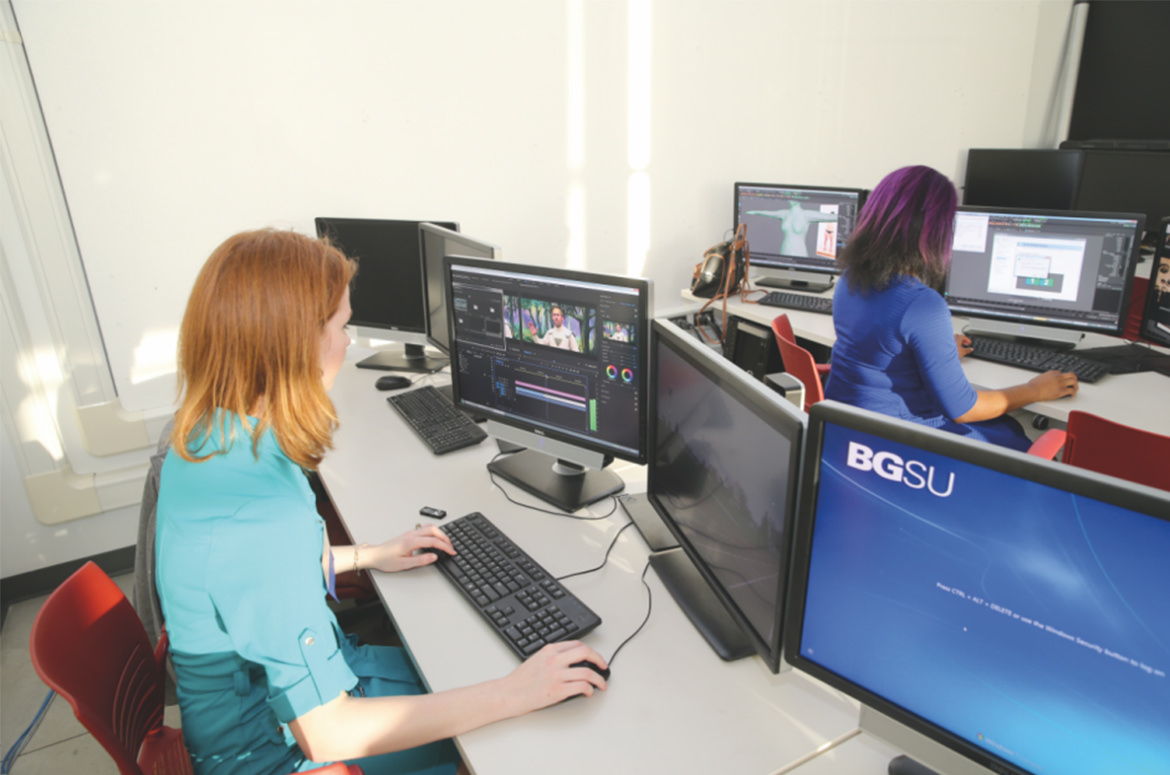
The Power of Collaboration: How Great Thou Art
The life of an artist is often thought to be creative yet solitary. Today, students in BGSU’s digital arts and graphic design programs are discovering that art done in collaboration with others heightens opportunities for creativity, and is also empowering.
Within the art of collaboration, individuals are allowed to experiment and take chances, teach others and learn from other members of the team. The trend of working with other units within the School of Art, as well as with others across and beyond campus, is creating symbiotic relationships that benefit everyone, explained Heather Elliott-Famularo, chair of the digital arts division at BGSU.
“For the past five or more years, we have been collaborating with other groups, such as the graphic design division, computer science, the School of Teaching and Learning (in the College of Education and Human Development) and area businesses and organizations,” she said. “Through these collaborative initiatives, students are gaining experiences that prepare them for careers.”
A project with the Toledo Opera to create a video game prototype to teach children about opera recently provided a unique collaboration opportunity. Digital arts and graphic design students started the process, working closely with a team from the opera to determine the goals and objectives of the game.
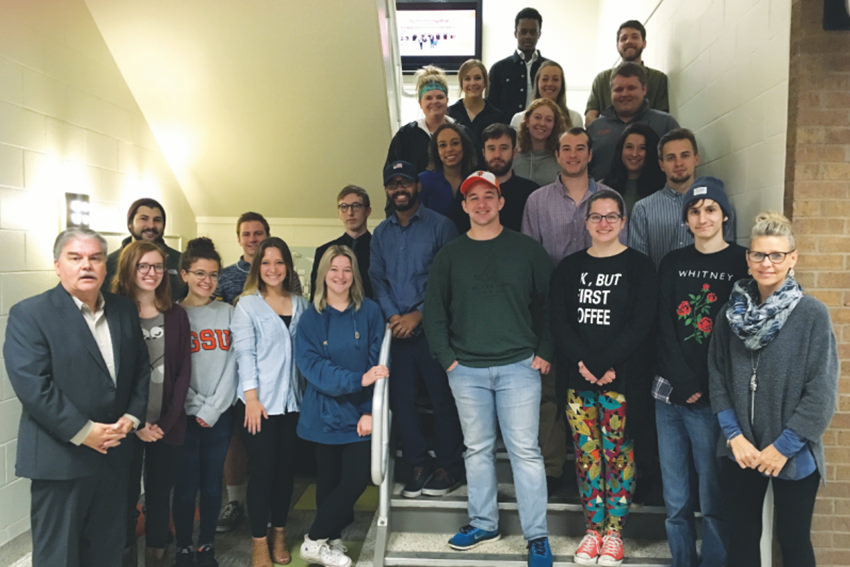
Amy Fidler, a graphic design instructor and one of the point people for the project, explained that students had to overcome typical group obstacles, from busy schedules to different aesthetic styles.
“They were ultimately able to work together to create interesting work,” she said.
Digital arts instructor Kim Turner Young also worked with the team as they expanded the membership by adding students who were knowledgeable about computer programming and music composition. These additions were important to further develop the interactive game.
Digital arts student Heather Monaghan, who was the lead for the game’s visual assets, acknowledged the benefit of working as part of the large team.
“I was able to meet graphic designers, programmers and musicians, and I was able to experience opera in a new way,” she said. “Everyone brought so much life and passion to the project, and when you play through the game, it shows that we all care about every small detail. The project has been such a journey, and it has taught me so much about teamwork, communication and hard work.”
Collaborations inspire whole-brain problem-solving
The graphic design program took advantage of a special opportunity this year through the Rick Valicenti Collaborative Teaching Initiative. Valicenti, a 1973 School of Art alumnus and founder and president of his own design firm in Chicago, envisioned and generously supported the collaborative teaching initiative to encourage new ways to promote creativity.
Jenn Stucker, associate professor and chair of the graphic design division, worked with Kirk Kern, lecturer and director of the Hamilton Center for Entrepreneurial Leadership in the College of Business, to develop the course “Cross-Disciplinary Collaborations in Whole-Brain Problem-Solving.” Their brainchild was designed to challenge students to work collaboratively, learn to embrace different thinking approaches and discover ways for innovation, Stucker explained.
The class of 24 students included 12 from the School of Art, 10 from the College of Business, and one each from the College of Education and Human Development and College of Technology, Architecture and Applied Engineering.
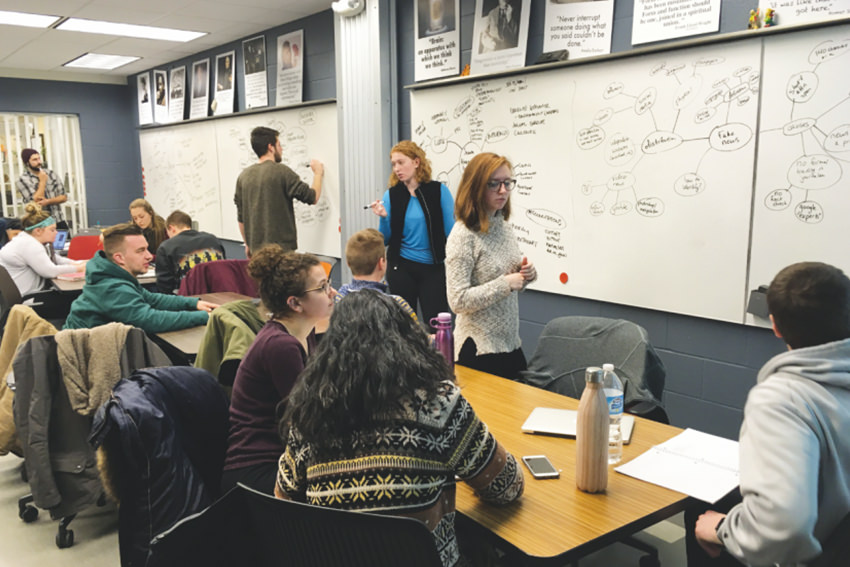
“We approached our exploration through analyzing and revealing different cognitive mind-sets, through channeling and unifying these perspectives to problem solve in innovative ways, through the evaluation of current design and business discourse,” Stucker said. “They participated in lively conversations and project-based activities about contemporary social issues,” all aimed at innovating for today’s complex problems.
According to Kern, “The class experiment was a success. Students learned to assess and utilize each other’s talents to leverage the best possible outcomes. They gained understanding and began to value their collaborators. This class gave the students an insight into how teams operate in today’s work environment.”
These experiences, combined with outstanding facilities and faculty who are leaders in their disciplines, are at the core of the program’s success, said Charles Kanwischer, associate director of the School of Art.
“The faculty are good about managing relationships with their peers and with others in the arts community and beyond, providing valuable experiences for our students,” he said. “These actions amplify our reputation and signal our commitment to make our programs relevant to the 21st century art discourse.”
Updated: 12/01/2017 11:58PM
